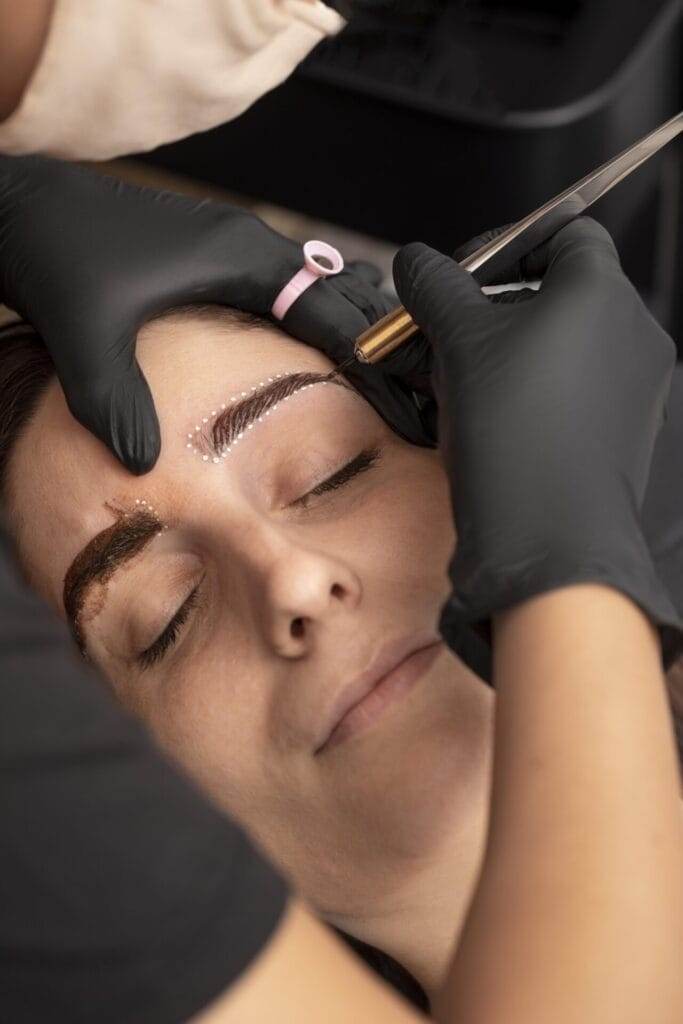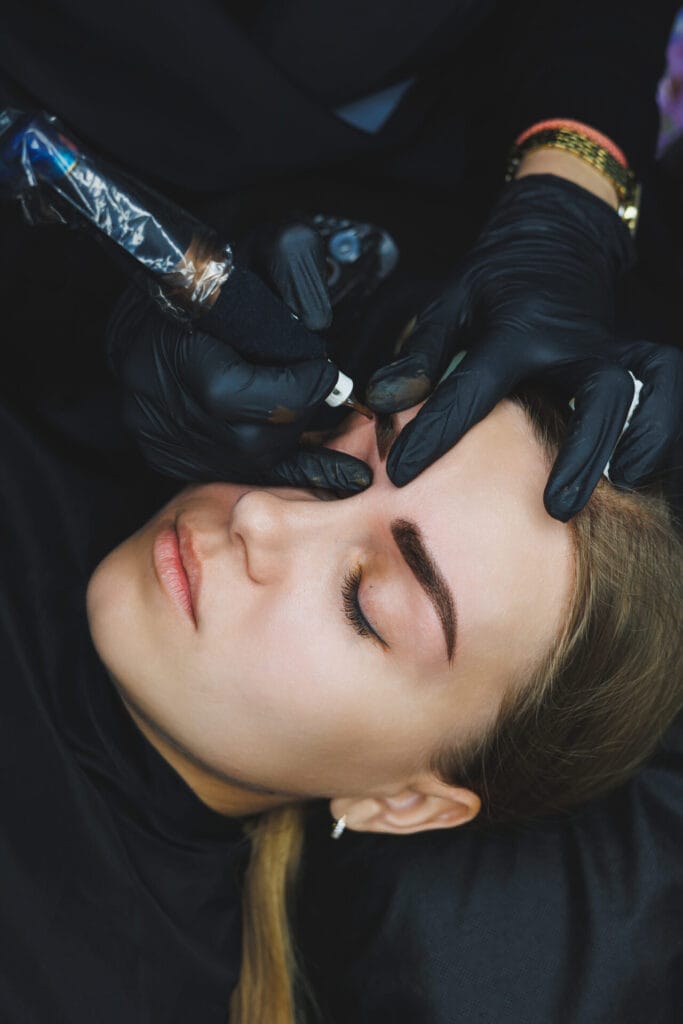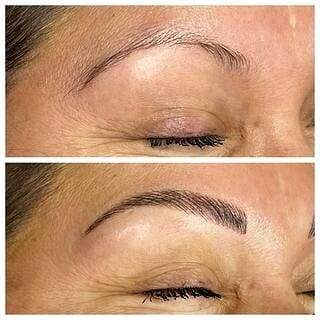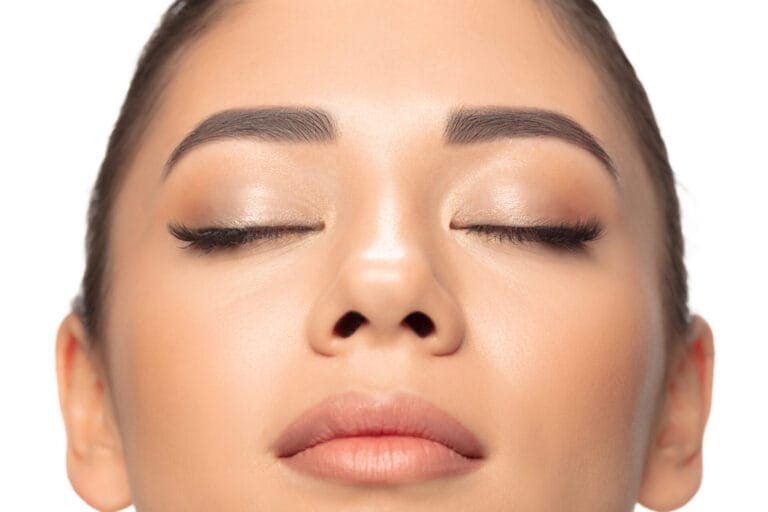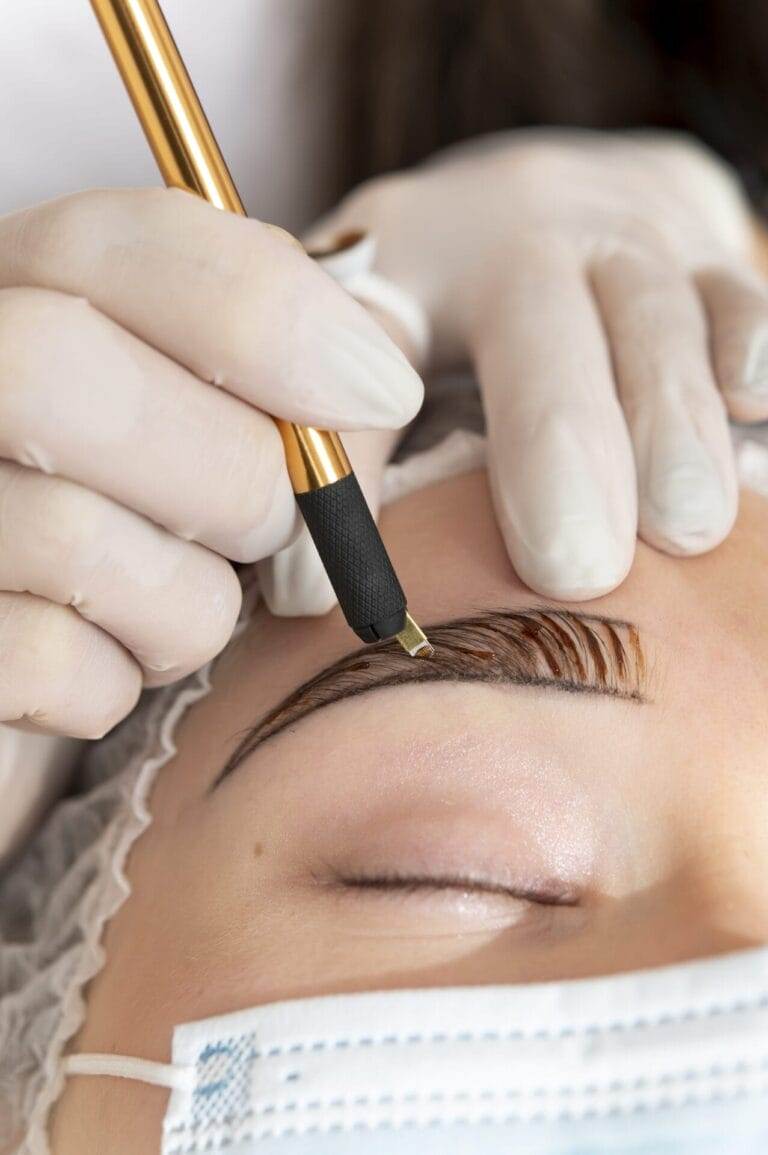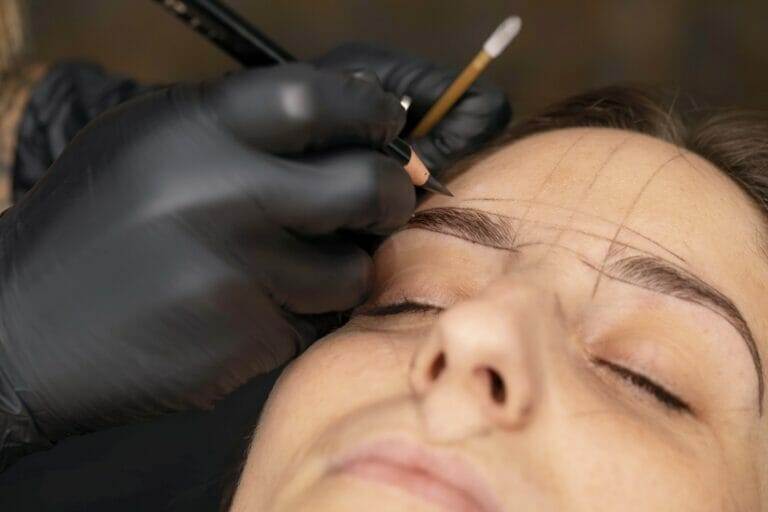In recent years, microblading has become increasingly popular as a way to achieve fuller, more defined eyebrows. This semi-permanent makeup technique has gained a lot of attention for its ability to create natural-looking results and save time in the daily makeup routine. If you have sparse brows or simply want to enhance your natural shape, microblading may be the solution you’ve been looking for.
What is microblading and how does it work?
Microblading is a form of cosmetic tattooing that involves manually implanting pigment into the skin to create hair-like strokes that mimic the appearance of natural eyebrows. Unlike traditional eyebrow tattooing, which uses a machine, microblading is done using a handheld tool with a series of fine needles. The artist uses this tool to create small incisions in the skin and then deposits the pigment into these incisions.
The process begins with a consultation where the artist will assess your natural brow shape and discuss your desired outcome. They will then use a pencil to outline the shape of your new brows, taking into consideration your facial features and personal preferences. Once you are satisfied with the shape, the artist will begin the microblading process.
The benefits of microblading for sparse brows
One of the main benefits of microblading is its ability to fill in gaps and create a fuller look for those with sparse brows. The hair-like strokes created during the procedure can blend seamlessly with your existing brow hairs, giving the appearance of naturally full brows. This can be especially beneficial for those who have over-plucked their eyebrows or have naturally thin or light-colored brows.
Another advantage of microblading is the natural-looking results it can achieve. Unlike traditional tattooing, which can sometimes result in harsh or unnatural-looking brows, microblading creates a more subtle and realistic effect. The individual hair-like strokes mimic the look of real eyebrow hairs, resulting in a more natural and flattering appearance.
In addition to the aesthetic benefits, microblading can also save time in your daily makeup routine. With microbladed brows, you no longer need to spend time filling in your brows with pencils or powders. Your brows will already be defined and shaped, allowing you to wake up with perfect brows every day.
The difference between microblading and traditional eyebrow tattooing
While both microblading and traditional eyebrow tattooing are forms of cosmetic tattooing, there are some key differences between the two methods.
One of the main differences is the tool used. Traditional tattooing uses a machine with a needle to deposit the pigment into the skin, while microblading uses a handheld tool with a series of fine needles. This allows for more precision and control during the microblading process, resulting in more natural-looking results.
Another difference is the depth at which the pigment is implanted into the skin. Traditional tattooing typically goes deeper into the dermis, while microblading only goes into the upper layers of the skin. This means that microblading is considered semi-permanent, as it will fade over time and may require touch-ups to maintain the desired look.
Microblading is often preferred over traditional tattooing for several reasons. The natural-looking results and ability to create hair-like strokes make microblading a popular choice for those looking for a more subtle and realistic brow enhancement. Additionally, the semi-permanent nature of microblading allows for flexibility and the ability to adjust the shape or color of the brows as desired.
Preparing for your microblading appointment
Before your microblading appointment, there are a few things you should do (and not do) to ensure the best possible outcome.
First, avoid any blood-thinning medications or supplements for at least a week before your appointment, as these can increase the risk of bleeding during the procedure. This includes medications such as aspirin, ibuprofen, and fish oil.
It is also important to properly care for your skin leading up to the appointment. Avoid excessive sun exposure and tanning beds, as this can affect the color retention of the pigment. Additionally, avoid using any exfoliating products or treatments on your brows in the week leading up to your appointment.
Lastly, it is important to communicate with your artist about any allergies or sensitivities you may have. This includes allergies to pigments or numbing creams that may be used during the procedure. Your artist will be able to recommend alternative products or take necessary precautions to ensure your safety and comfort during the appointment.
What to expect during the microblading process
During the microblading process, you can expect several steps to be taken to ensure the best possible results.
First, your artist will clean and numb the area to be treated. This is done to minimize any discomfort during the procedure. Once the area is numb, the artist will begin creating the hair-like strokes using the handheld tool and pigment.
The artist will work in small sections, gradually building up the shape and density of your brows. They will constantly check with you throughout the process to ensure you are happy with the shape and color. Once the microblading is complete, a pigment will be applied to the brows to enhance and darken the color.
The entire process typically takes around two hours, although this can vary depending on the individual and the complexity of the desired outcome. While some discomfort may be felt during the procedure, it is generally well-tolerated and most people find it to be relatively painless.
Aftercare tips for your newly microbladed brows

After your microblading appointment, it is important to properly care for your brows to ensure optimal healing and long-lasting results.
First and foremost, avoid getting your brows wet for at least 24 hours after the procedure. This includes avoiding activities such as swimming or sweating excessively. Water can cause the pigment to fade or blur, so it is important to keep your brows as dry as possible during this time.
Additionally, avoid touching or picking at your brows during the healing process. This can disrupt the healing and potentially cause infection or scarring. It is also important to avoid applying any makeup or skincare products directly on your brows until they are fully healed.
Your artist will provide you with specific aftercare instructions, which may include applying a healing ointment or cream to your brows several times a day. Follow these instructions carefully to ensure the best possible healing and results.
How long does microblading last and when should you get touch-ups?
Microblading is considered semi-permanent, meaning that it will fade over time and may require touch-ups to maintain the desired look. On average, microblading can last anywhere from one to three years, although this can vary depending on several factors.
The lifespan of microblading can be affected by factors such as skin type, lifestyle, and exposure to the sun. Those with oilier skin may find that the pigment fades more quickly, while those with drier skin may experience longer-lasting results. Additionally, excessive sun exposure or the use of certain skincare products can cause the pigment to fade more quickly.
Touch-ups are typically recommended every 12-18 months to maintain the desired shape and color of your brows. During a touch-up appointment, your artist will assess the condition of your brows and make any necessary adjustments or enhancements. It is important to schedule touch-ups as recommended to ensure the best possible results.
Microblading for different brow shapes and styles
One of the great things about microblading is its ability to be customized to fit different brow shapes and styles. Whether you prefer a natural and subtle look or a more bold and defined brow, microblading can be tailored to your individual preferences.
For those with thin or sparse brows, microblading can be used to create a fuller and more defined look. The hair-like strokes can be placed strategically to fill in gaps and create the appearance of naturally full brows.
If you have naturally thick brows but want a more polished and defined look, microblading can also be used to enhance your existing shape. The artist can create hair-like strokes in areas where you may have less hair or define the arch or tail of your brows for a more polished appearance.
During your consultation with your artist, be sure to communicate your desired outcome and any specific preferences you may have. They will be able to assess your natural brow shape and recommend the best approach to achieve your desired look.
The cost of microblading and is it worth the investment?
The cost of microblading can vary depending on several factors, including the location, the experience of the artist, and the complexity of the desired outcome. On average, microblading can cost anywhere from $300 to $800 per session.
While this may seem like a significant investment, many people find that it is worth the cost for the convenience and long-lasting results that microblading provides. When considering the cost, it is important to factor in the time and money saved on daily makeup products and treatments.
It is also important to consider the expertise and experience of the artist when determining if microblading is worth the investment. Choosing a qualified and experienced artist can ensure that you achieve the best possible results and minimize the risk of complications or unsatisfactory outcomes.
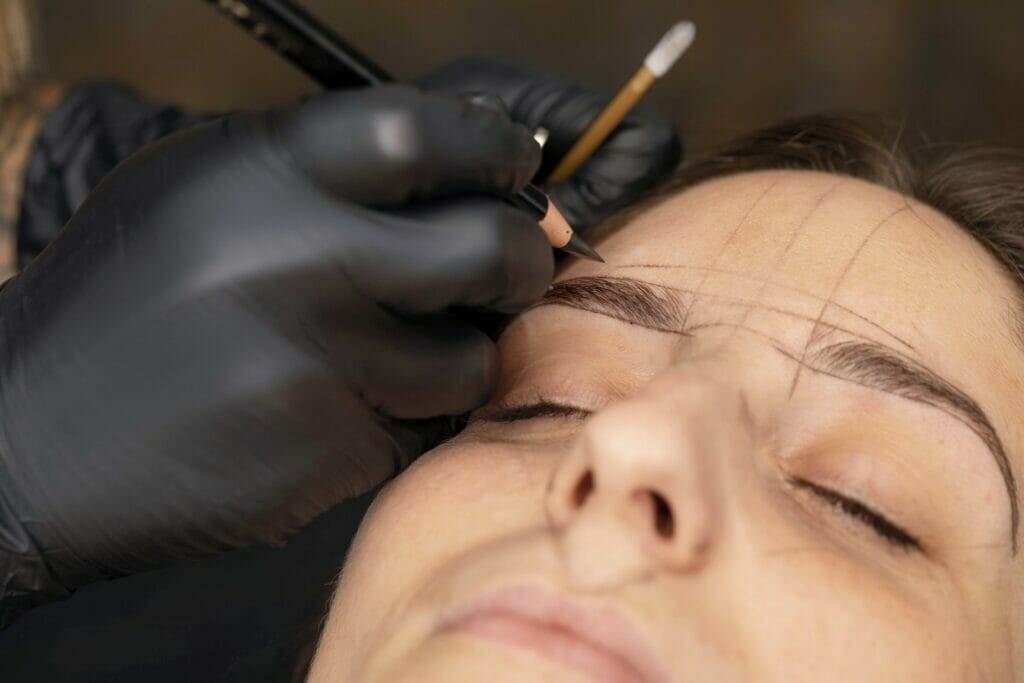
Microblading vs other brow treatments: which is right for you?
When deciding on a brow treatment, it is important to consider your individual needs and preferences. While microblading is a popular choice for many, there are other options available that may better suit your needs.
One alternative to microblading is traditional eyebrow tattooing. As mentioned earlier, traditional tattooing uses a machine with a needle to deposit pigment into the skin. This method can be more permanent than microblading and may be better suited for those who want a more dramatic or long-lasting result.
Another option is eyebrow tinting or henna brows. These treatments involve dyeing the brow hairs to enhance their color and shape. While these treatments do not create hair-like strokes like microblading does, they can still provide a more defined and polished look.
When choosing the right treatment for you, consider factors such as your desired outcome, budget, and lifestyle. It may also be helpful to consult with a professional who can assess your individual needs and recommend the best approach.
Microblading has become increasingly popular in recent years for its ability to create natural-looking, fuller brows. This semi-permanent makeup technique offers several benefits, including saving time in the daily makeup routine and providing long-lasting results.
When considering microblading, it is important to research and choose a qualified and experienced artist who can achieve the desired outcome. Proper aftercare is also crucial to ensure optimal healing and long-lasting results.
While microblading may not be the right choice for everyone, it is worth considering if you have sparse brows or simply want to enhance your natural shape. Consult with a professional to discuss your individual needs and preferences before making a decision.


